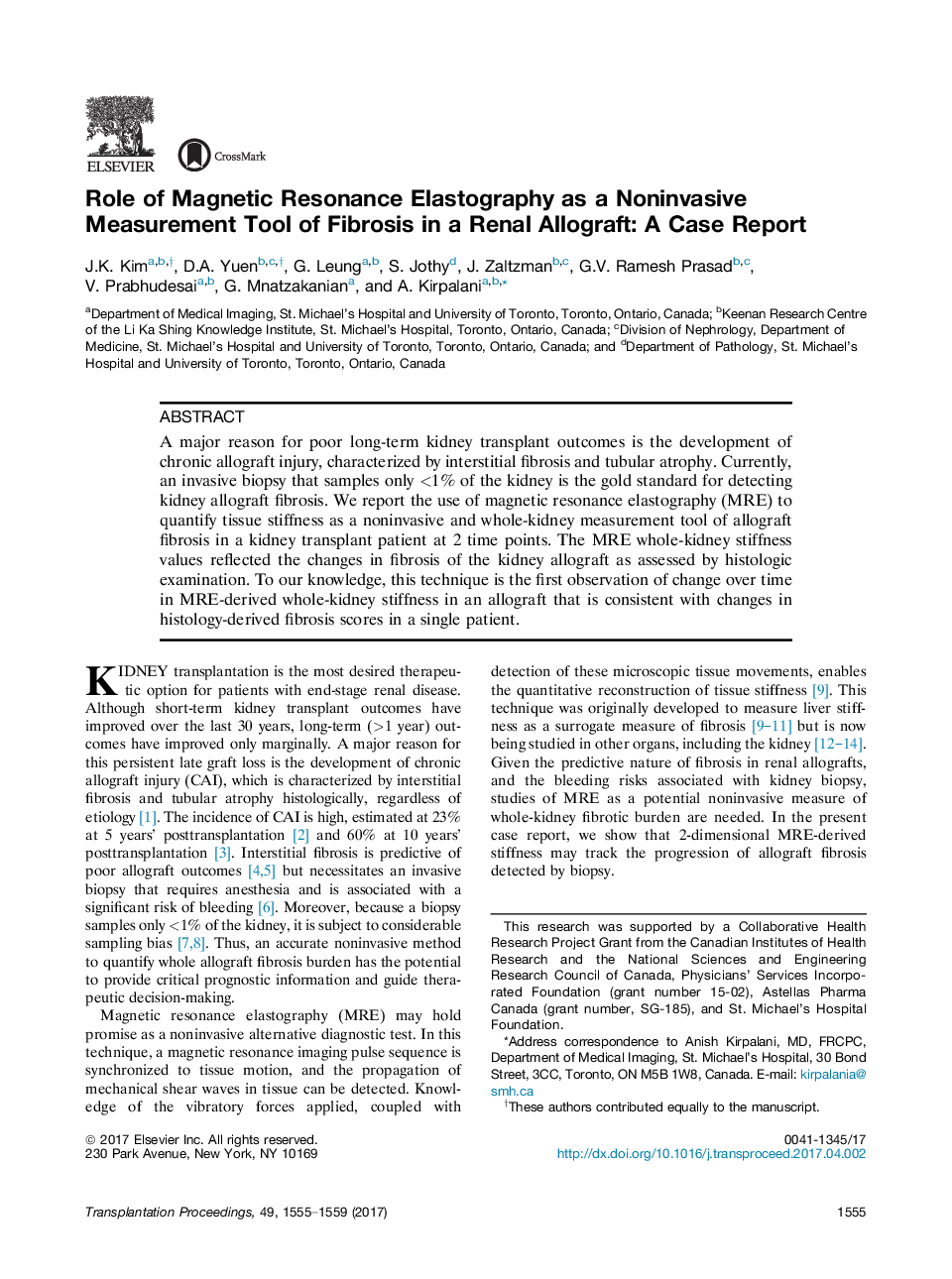| Article ID | Journal | Published Year | Pages | File Type |
|---|---|---|---|---|
| 5728733 | Transplantation Proceedings | 2017 | 5 Pages |
â¢Magnetic resonance elastography (MRE) can noninvasively image organ stiffness.â¢This report is the first to use MRE to document that the kidney stiffens as it scars.â¢MRE may be a noninvasive tool for measuring whole-kidney fibrotic burden.â¢Further validation studies are needed.
A major reason for poor long-term kidney transplant outcomes is the development of chronic allograft injury, characterized by interstitial fibrosis and tubular atrophy. Currently, an invasive biopsy that samples only <1% of the kidney is the gold standard for detecting kidney allograft fibrosis. We report the use of magnetic resonance elastography (MRE) to quantify tissue stiffness as a noninvasive and whole-kidney measurement tool of allograft fibrosis in a kidney transplant patient at 2 time points. The MRE whole-kidney stiffness values reflected the changes in fibrosis of the kidney allograft as assessed by histologic examination. To our knowledge, this technique is the first observation of change over time in MRE-derived whole-kidney stiffness in an allograft that is consistent with changes in histology-derived fibrosis scores in a single patient.
